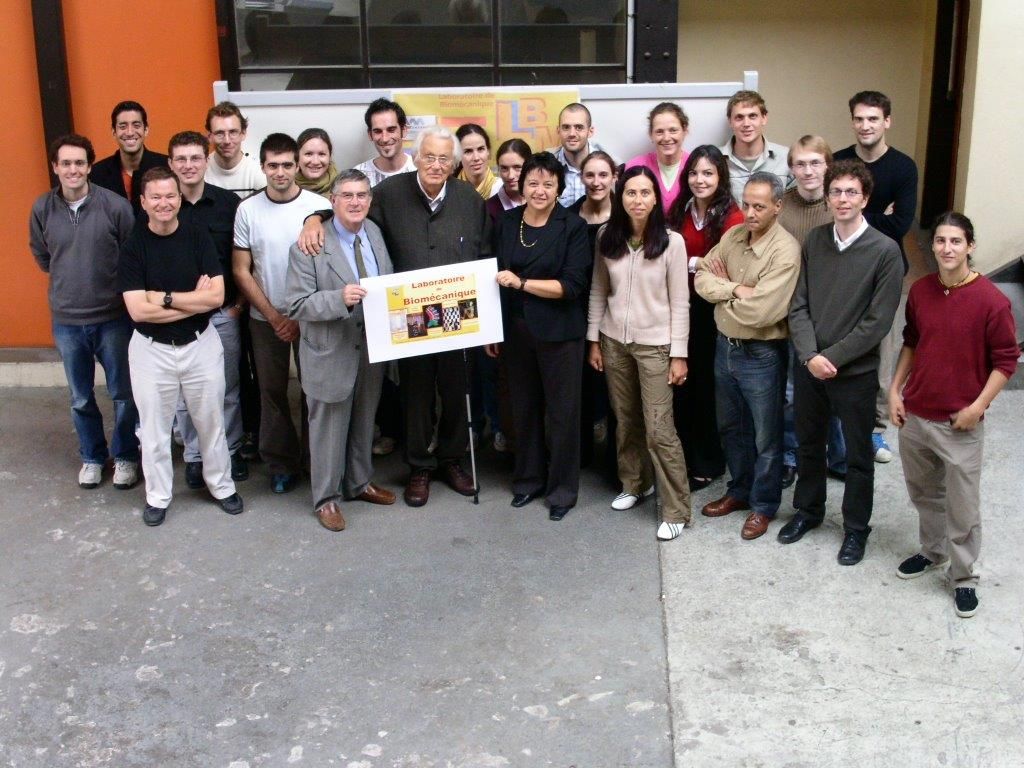The INRS is organizing an international conference on the prevention of musculoskeletal disorders from May 5 to 7, 2026, in Nancy.
The conference will focus on the following themes: New technologies, New forms of work and organization, Risk assessment and health effects, Socio-ecological transitions, Approaches based on the diversity of populations and sectors, Implementation and evaluation of preventive interventions.
Submissions for symposia are open until September 15, 2025, and submissions for posters and oral presentations are open until October 13, 2025.
For more information, visit: https://en.tms2026.inrs.fr/.

It is with great sadness that we have learned of the passing of Professor Jean Dubousset this Monday, May 5.
An exceptional orthopaedic surgeon and a pioneer in treating spinal deformities, Jean Dubousset has left a lasting mark on the history of medicine through his work. His name will forever be associated with the Cotrel-Dubousset instrumentation, which revolutionized the surgical management of scoliosis in the 1980s. But his impact extends far beyond the operating rooms.
As a researcher associated with the Georges Charpak Human Biomechanics Institute, he actively contributed to several research projects combining biplanar imaging, 3D modeling of the spine, and biomechanical monitoring of vertebral pathologies, particularly in children and adolescents.
His interactions were always stimulating: demanding, yet profoundly kind. He had a talent for conveying the clinical complexity of cases to engineers while remaining open and curious about methodological and technological innovations arising from biomechanics research.
He was also one of the driving forces behind the development of the EOS radiography system, a rare collaboration between medicine, particle physics, and biomedical engineering. In collaboration with Georges Charpak, Nobel Prize in Physics, and Wafa Skalli, he actively participated in the design of a low-dose biplanar imaging device capable of reconstructing the entire skeleton in 3D in a functional position. This system, now deployed in many hospitals worldwide, fully embodies Jean Dubousset's vision: more precise, less invasive medicine, serving the patient.
Jean Dubousset embodied the rare and precious link between clinical practice, science, and humanity. We are infinitely grateful for his trust, loyalty, and intellectual generosity.
Our thoughts are with his family, loved ones, and the medical and scientific community he enriched so greatly.

A summer school is organized in Sweden from August 17 to 22, 2025, on the theme: Computational TIssue Biomechanics - Making Sense of Data.
The school presents and applies current tools in the mechanical analysis of continuous media of hard and soft biological tissues. It provides participants with a broad foundation for the mechanical description of biological tissues, enabling them to more effectively tackle individual scientific projects. The courses are designed for doctoral students and postdoctoral researchers with a good knowledge of bioengineering and solid mechanics.
More information (full program and registration) is available here.
Laureates of the Société de Biomécanique awards agree to submit an original scientific article related to their research to one of our partner journals, Clinical Biomechanics or Journal of Biomechanics.
To highlight their contributions, these articles will be progressively updated on the laureates' page.
Don't hesitate to read them!
We want to thank Bruno Watier and Thomas Robert for all their hard work on behalf of the Société de Biomécanique over the past six years. Your votes resulted in the election of Mickael Begon, Cédric Laurent and Antoine Muller. Well done to them!
We would also like to thank Romain Bechet, a student member, who left the board after completing his PhD.
A new board was elected on 27 October 2024, congratulations to its new members:
President : Yohan Payan
Vice-Chairman: Yoann Blache
General Secretary: Aurélie Benoit
Treasurer: Hélène Follet
Find all contacts on the officers' page.